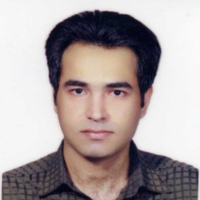Modeling the effect of moisture stress on the shift in optimal and maximum temperatures for germination of Malva parviflora L. seeds: Introducing a new hydrothermal time model
Seed germination is largely controlled by the temperature and moisture content of the seedbed. Therefore, hydrothermal time models have been widely used to describe seed germination patterns in response to temperature and water potential (Ψ) of the seedbed. The majority of these models assume a Normal distribution for base water potential (Ψb(g)) to describe the variation in time to germination. In some of these models, it is assumed that the thermoinhibition of germination induced by the shift in Ψb(g) to more positive values occur only at temperatures above the optimum (To) and that the To is independent of drought stress levels. In this study, the Weibull hydrothermal time was used to quantify the Ψb(g) changes in response to temperature and to model the effect of drought stress on the shift in the optimal (To(g)) and maximum (Tm(g)) temperatures for different germination fractions of malva parviflora seeds.
The experiment was conducted at the Seed Technology Laboratory of Agricultural Sciences and Natural Resources University of Khuzestan in 2016. Germination test was performed at eight constant temperatures of 8, 12, 16, 20, 24, 28, 32 and 36 (± 0.2) °C in light/dark conditions (12 h/12 h). In each of the above temperature regimes, seed germination response to different levels of drought stress, i.e. osmotic solutions with concentrations of 0, -0.2, -0.4, -0.6, -0.8 and -0.1 MPa was evaluated. Germination test was performed with four replications (each Petri dish as one replicate). In each replicate, 50 seeds were placed on a layer of Whatman No 1 filter paper in a 9 cm glass Petri dish, and then moistened with 7 ml distilled water or other osmotic solutions. The number of germinated seeds was counted twice every day until germination stopped at each temperature regime (when no germination occurred for 5 consecutive days). All models, having been formulated into the hydrotime and then hydrothermal models, were fitted to data using PROC NLMIXED procedure of SAS software version 9.4.
While Ψb(g) showed a linear increase in the temperature range between Tb (base temperature) and Tm(g), the hydrotime constant (θH) decreased nonlinearly in response to increasing temperature. Based on the relationship between Ψb(g) and θH, the shape of the germination rate (GR(g)) response to temperature in the hydrothermal time model was curvilinear. The model estimated the values of θHT (hydrothermal time constant), Tb, Ψbase (base water potential at Tb), and KT (slope of the Ψb(g) response to temperature) as 1800.04 MPa °C h, 4.20 °C, -2.46 MPa, and 0.064 MPa °C-1, respectively. Both To(g) and Tm(g) decreased proportionally with increasing drought intensity and became cooler for higher germination percentiles. For example, the estimated To(50) (optimal temperature for the median) for M. parviflora seeds germinated under no water stress (Ψ=0 MPa) was 23.38 °C but dropped to 15.59 °C as water availability became minimum (Ψ=-1.0 MPa). Similarly, it was estimated that 50% of seeds would be able to germination at (or below) 42.55 °C form zero osmotic potential (Tm(50) at Ψ=0 MPa) but to attain the same germination level at -1.0 MPa, temperature should never exceed 26.99 °C (Tm(50) at Ψ=-1.0 MPa).
The hydrothermal time model not only gave good fits to germination data but also showed some adaptive properties of M. parviflora seeds to different temperature and moisture environments. With the increasing severity drought, the To(g) and Tm(g) shifted to cooler values, which mean that the seeds were able to germinate at a narrower temperature range under drought conditions.
- حق عضویت دریافتی صرف حمایت از نشریات عضو و نگهداری، تکمیل و توسعه مگیران میشود.
- پرداخت حق اشتراک و دانلود مقالات اجازه بازنشر آن در سایر رسانههای چاپی و دیجیتال را به کاربر نمیدهد.


